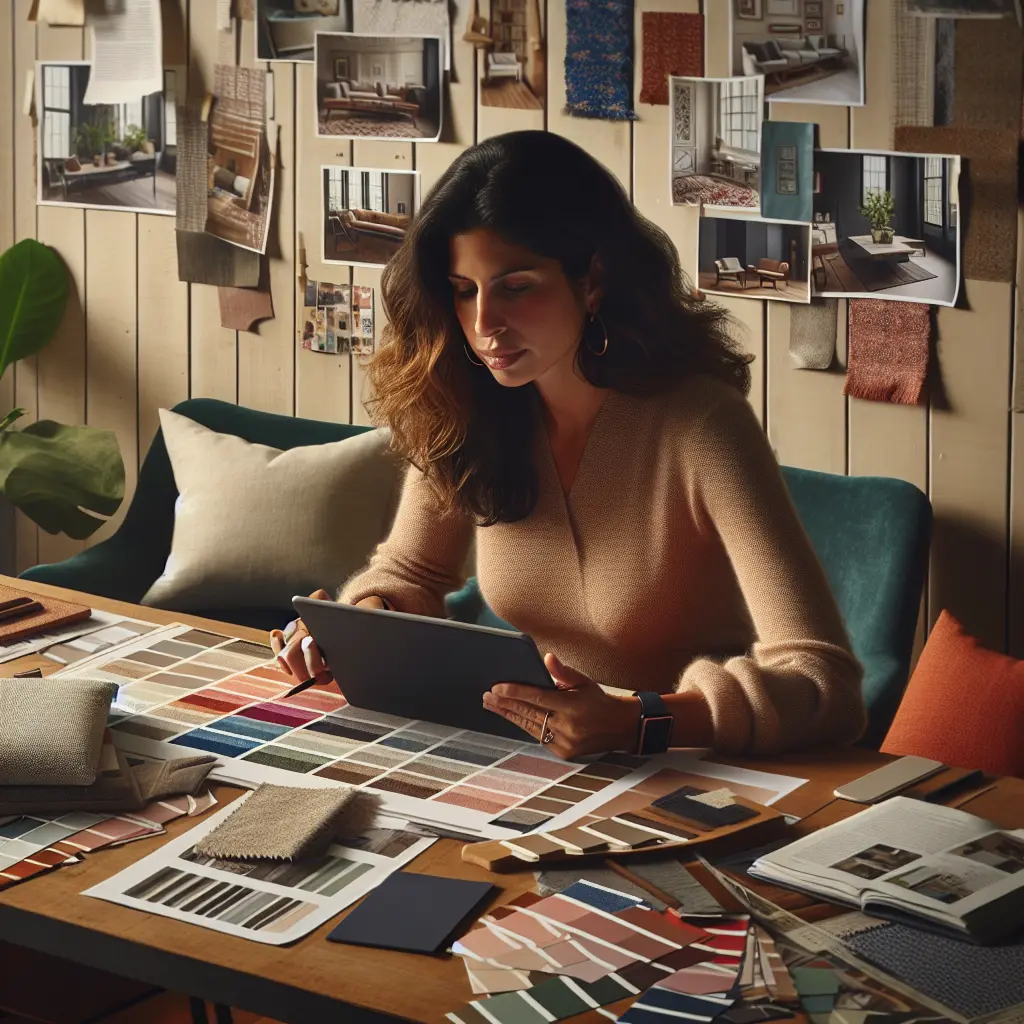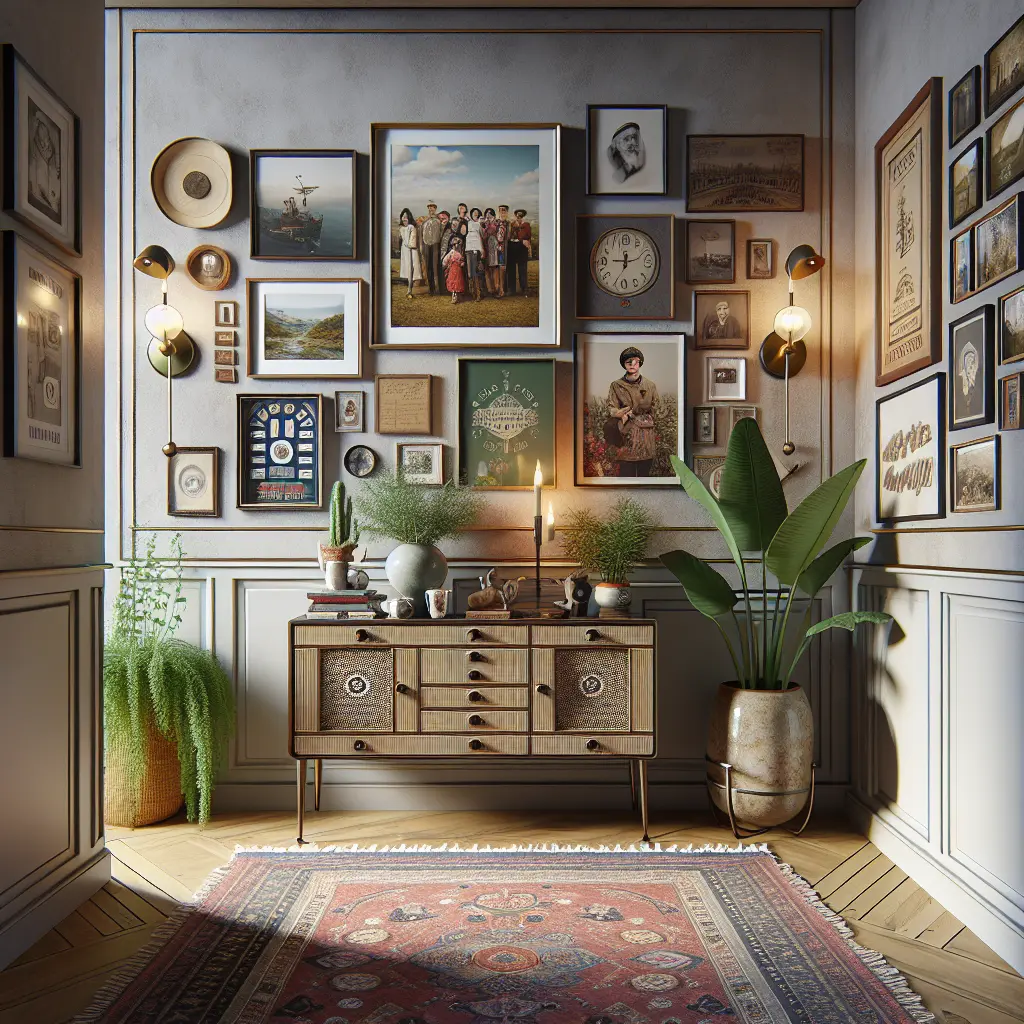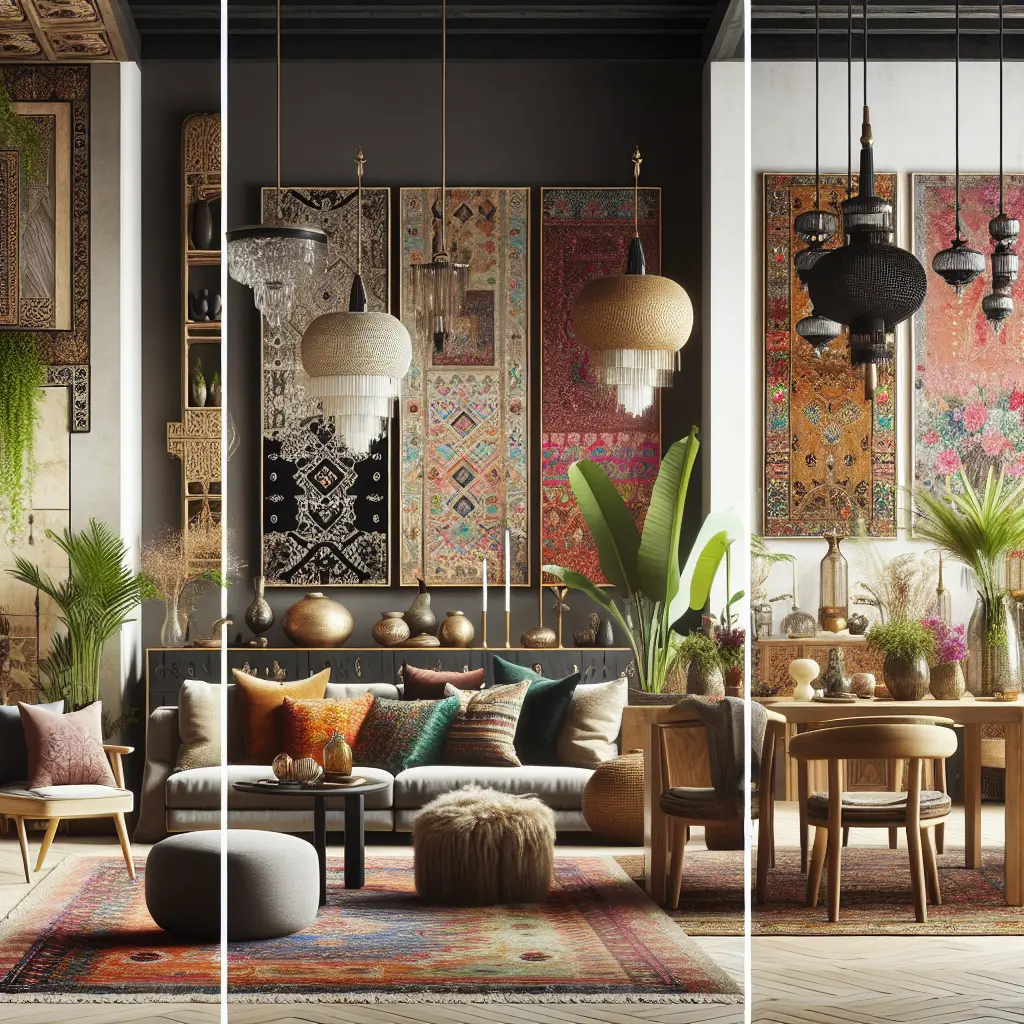At Curvspace, we understand the power of personal style in transforming a house into a home. Your living space is a canvas for self-expression, and nowhere is this more evident than in those often-overlooked intermediate and threshold areas. These transitional spaces offer unique opportunities to showcase your signature style, creating a lasting impression on both residents and visitors alike.
Reader Disclosure
Jump to:
The Art of Creating Your Signature Style
Creating a signature style is about more than just following trends or copying what you see in magazines. It’s about curating a look that reflects your personality, experiences, and aspirations. Your home should tell your story, and every corner should be an opportunity to express who you are.
Understanding Your Aesthetic Preferences

Before you start decorating, it’s crucial to understand your aesthetic preferences. Take some time to reflect on the colors, textures, and patterns that resonate with you. Consider the following questions:
- What colors make you feel most comfortable and energized?
- Do you prefer clean lines or more ornate designs?
- Are you drawn to natural materials or sleek, modern finishes?
- What kind of atmosphere do you want to create in your home?
By answering these questions, you’ll start to develop a clearer picture of your personal style. Remember, your style doesn’t have to fit neatly into one category. Many people find that their taste is a unique blend of different styles.
The Power of Mood Boards
One effective way to visualize your signature style is by creating a mood board. This can be a physical board where you pin fabric swatches, paint chips, and magazine clippings, or a digital board using platforms like Pinterest or Canva. The goal is to collect images and ideas that inspire you and represent the aesthetic you’re aiming for.
Creating Your Digital Mood Board
- Choose a platform (e.g., Pinterest, Canva, or Moodboard)
- Collect images that inspire you
- Organize images by room or theme
- Look for common elements across your selections
- Use your mood board as a reference when making design decisions
The Importance of Intermediate and Threshold Spaces
Intermediate and threshold spaces are the unsung heroes of home design. These areas, which include entryways, hallways, landings, and transitional spaces between rooms, play a crucial role in setting the tone for your home and creating a cohesive flow throughout your living space.
Entryways: Making a First Impression
Your entryway is the first thing people see when they enter your home, making it the perfect place to introduce your signature style. Consider the following elements when decorating your entryway:
- Wall Color: Choose a color that complements your overall design scheme and sets the mood for the rest of your home.
- Lighting: Install a statement light fixture that reflects your style and provides adequate illumination.
- Furniture: A console table or bench can add functionality and style to your entryway.
- Artwork: Hang a piece of art or a mirror that captures your aesthetic.
- Accessories: Use decorative items like vases, trays, or sculptures to add personality.
Hallways: Connecting Spaces with Style
Hallways are often overlooked in home design, but they offer a unique opportunity to create visual interest and tie different areas of your home together. Here are some ideas for decorating your hallways:
- Gallery Wall: Create a gallery wall with a collection of artwork or photographs that reflect your interests and experiences.
- Runners: Use a stylish runner to add color and texture to your hallway floor.
- Lighting: Install wall sconces or pendant lights to create ambiance and highlight artwork.
- Console Tables: If space allows, add a narrow console table to display decorative items or provide storage.
Landings: Unexpected Opportunities for Expression
Stair landings are often underutilized spaces that can become focal points in your home. Consider these ideas for decorating your landings:
- Reading Nook: Create a cozy reading nook with a comfortable chair and good lighting.
- Mini Gallery: Use the wall space to display a collection of artwork or photographs.
- Plant Corner: Transform your landing into a green oasis with a collection of potted plants.
- Functional Storage: Install built-in shelving or a storage bench to maximize space.
Intermediate Space Styling Tips
- Use consistent color schemes to create flow between spaces
- Incorporate lighting at different levels for depth and ambiance
- Add texture through rugs, wall coverings, or decorative objects
- Consider the scale of furniture and decor in relation to the space
- Use mirrors to create the illusion of more space and reflect light
Personalizing Your Intermediate Spaces

Now that we understand the importance of intermediate and threshold spaces, let’s explore how to personalize these areas to reflect your signature style.
Incorporating Personal Mementos
One of the most effective ways to infuse your personality into your home is by displaying personal mementos. These could be souvenirs from your travels, family heirlooms, or handmade items. In intermediate spaces, consider creating vignettes that tell a story about your life and experiences.For example, in a hallway, you could create a gallery wall that combines family photographs with artwork collected during your travels. On a stair landing, you might display a collection of vintage books alongside a cherished family heirloom.
Playing with Texture and Pattern
Texture and pattern are powerful tools for adding depth and interest to your intermediate spaces. Consider incorporating the following elements:
- Textured Wallpaper: Add visual interest to a hallway or entryway with a textured wallpaper.
- Patterned Rugs: Use a patterned runner to guide the eye through a hallway or up a staircase.
- Textured Artwork: Incorporate three-dimensional art pieces or tapestries to add depth to your walls.
- Mixed Materials: Combine different materials like wood, metal, and fabric to create a rich, layered look.
Lighting as a Design Element
Lighting plays a crucial role in setting the mood and highlighting key design elements in your intermediate spaces. Consider the following lighting options:
- Statement Fixtures: Install a dramatic chandelier or pendant light in your entryway or on a stair landing.
- Wall Sconces: Use wall sconces to create ambiance and highlight artwork in hallways.
- Picture Lights: Install picture lights above artwork to draw attention to your gallery walls.
- LED Strip Lighting: Use LED strips to create subtle, indirect lighting along baseboards or under stair treads.
Lighting Temperature Guide
| Color Temperature | Mood | Best For |
|---|---|---|
| 2700K – 3000K | Warm and cozy | Living rooms, bedrooms |
| 3500K – 4100K | Bright and vibrant | Kitchens, bathrooms |
| 5000K – 6500K | Cool and energizing | Home offices, craft rooms |
Creating Flow and Cohesion
While it’s important to express your personal style in intermediate spaces, it’s equally crucial to create a sense of flow and cohesion throughout your home. Here are some tips for achieving this:
Color Coordination
Use a consistent color palette throughout your home, with variations in intensity and shade to create interest. For example, if your living room features shades of blue and gray, you might use lighter versions of these colors in your hallway, and then introduce pops of a complementary color, like yellow, in your entryway.
Repeating Elements
Identify key elements of your signature style and repeat them throughout your home. This could be a particular pattern, a type of material, or a specific decorative item. For instance, if you love geometric patterns, you might use geometric-patterned wallpaper in your entryway, geometric throw pillows in your living room, and geometric-shaped mirrors in your hallway.
Transitional Pieces
Use transitional pieces to bridge the gap between different areas of your home. For example, if your living room has a modern aesthetic and your dining room is more traditional, you might use a transitional-style console table in the space between them to create a smooth visual transition.
Adapting Your Style to Different Spaces
While maintaining a cohesive look is important, it’s also crucial to adapt your style to the specific needs and functions of each space. Here’s how you can do this in different intermediate areas:
Entryways
Your entryway should be both functional and welcoming. Consider incorporating the following elements:
- Storage Solutions: Include a coat rack, shoe storage, or a console table with drawers to keep clutter at bay.
- Seating: If space allows, add a small bench or chair for putting on and taking off shoes.
- Mirror: A mirror can make the space feel larger and provide a last-minute check before leaving the house.
Hallways
Hallways should guide people through your home while also providing visual interest. Consider these ideas:
- Artwork: Create a gallery wall or hang a series of large-scale art pieces.
- Narrow Furniture: Use slim console tables or floating shelves to add functionality without impeding traffic flow.
- Lighting: Install wall sconces or track lighting to illuminate artwork and create ambiance.
Stair Landings
Stair landings offer unique opportunities for creating cozy nooks or display areas. Try these ideas:
- Reading Nook: Place a comfortable chair and a small side table to create a quiet reading spot.
- Display Area: Use the wall space to showcase a collection of objects or create a family photo gallery.
- Mini Library: Install floating shelves to display books and create a mini library.
Space Utilization in Intermediate Areas
Balancing Form and Function
While creating a visually appealing space is important, it’s equally crucial to ensure that your intermediate spaces are functional. Here are some tips for striking the right balance:
Multipurpose Furniture
Choose furniture pieces that serve multiple purposes. For example:
- A bench in the entryway that provides seating and storage
- A console table in the hallway with drawers for hidden storage
- A bookshelf on a stair landing that doubles as a room divider
Smart Storage Solutions
Incorporate clever storage solutions to keep your intermediate spaces clutter-free:
- Use wall-mounted hooks or a coat rack in the entryway
- Install floating shelves in hallways for displaying decor and storing small items
- Utilize the space under stairs for built-in storage or a small workspace
Proper Lighting
Ensure your intermediate spaces are well-lit for both safety and aesthetics:
- Use a combination of ambient, task, and accent lighting
- Install dimmer switches to adjust lighting levels throughout the day
- Consider motion-sensor lights for nighttime safety in hallways and on stairs
Seasonal Updates for Intermediate Spaces
One of the joys of having a signature style is the ability to adapt it to different seasons. Here are some ideas for seasonal updates in your intermediate spaces:
Spring/Summer
- Incorporate fresh flowers or potted plants
- Use lighter, brighter colors in your decor
- Switch to lighter fabrics for curtains or throw pillows
Fall/Winter
- Add cozy textures like wool or faux fur
- Use warmer, richer colors in your decor
- Incorporate seasonal elements like pinecones or dried leaves
By making these small seasonal changes, you can keep your intermediate spaces feeling fresh and current while still maintaining your overall signature style.
People Also Ask
How can I make my hallway look more interesting?
Create a gallery wall, use a patterned runner, or install statement lighting to add visual interest to your hallway.
What’s the best way to decorate a small entryway?
Use vertical space with wall-mounted storage, incorporate a mirror to create the illusion of more space, and choose a light color palette to keep the area feeling open and airy.
How can I make my stair landing more functional?
Consider adding a small seating area, creating a mini library with floating shelves, or using the space as a display area for artwork or collections.
What lighting is best for intermediate spaces?
A combination of ambient, task, and accent lighting works well. Consider using wall sconces, pendant lights, and picture lights to create a layered lighting scheme.
How can I create a cohesive look throughout my home?
Use a consistent color palette, repeat key design elements, and incorporate transitional pieces to create a smooth flow between different areas of your home.
Conclusion
Creating your signature style in intermediate and threshold spaces is an opportunity to showcase your personality and create a cohesive flow throughout your home. By understanding your aesthetic preferences, incorporating personal elements, and balancing form with function, you can transform these often-overlooked areas into standout features of your home. Remember, your style should evolve with you, so don’t be afraid to make changes and updates as your tastes and needs change over time.
Show & Tell
We’d love to hear your thoughts about these ideas! Simply click the link to head over to your favorite platform and add your comments about this post there. We’d like to know about your insights, questions, or just saying hi.
Disclosure
Our content is reader-supported. This means if you click on some of our links, then we may earn a commission. Commissions do not affect our editor’s opinions or evaluations. Learn more about our editorial process.

About the Editorial Staff
The Curvspace editorial team comprises a diverse group of experts on intermediate and threshold spaces in homes and workplaces. Architects and interior designers, civil engineers and artists, environmental and behavioral psychologists, sociologists and anthropologists. All collaborate to create helpful content, that explores the full potential of these often-overlooked areas to enhance our daily lives.


